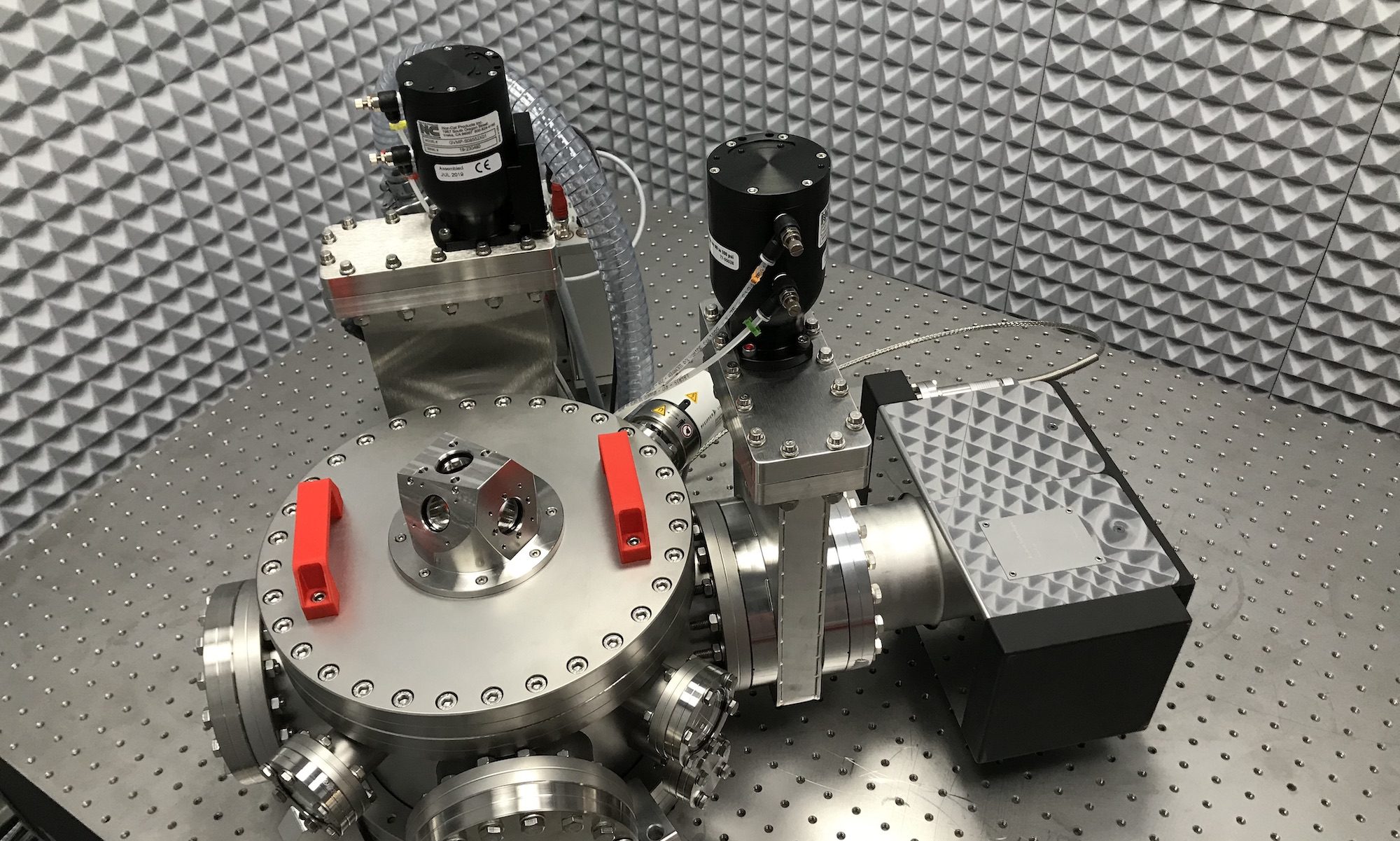L. Bellon, Habilitation à Diriger des recherches de L’École Normale Supérieure de Lyon, 2010
oai: tel.archives-ouvertes.fr/tel-00541336
Abstract
This mémoire presents my current research interests in micro and nano-mechanics in a comprehensive manuscript. Our experimental device is first presented: this atomic force microscope, designed and realized in the Laboratoire de Physique de l’ENS Lyon, is based on a quadrature phase differential interferometer. It features a very high resolution (down to 10 fm/rtHz) in the measurement of deflexion, down to low frequencies and on a huge input range. The dual output of the interferometer implies a specific handling to interface common scanning probe microscope controllers. We developed analog circuitries to tackle static (contact mode) and dynamic (tapping mode) operations, and we demonstrate their performance by imaging a simple calibration sample.
As a first application, we used the high sensitivity of our interferometer to study the mechanical behavior of micro-cantilevers from their fluctuations. The keystone of the analysis is the Fluctuation-Dissipation Theorem (FDT), relating the thermal noise spectrum to the dissipative part of the response. We apply this strategy to confront Sader’s model for viscous dissipation with measurements on raw silicon cantilevers in air, demonstrating an excellent agreement. When a gold coating is added, the thermal noise is strongly modified, presenting a 1/f like trend at low frequencies: we show that this behavior is due to a viscoelastic damping, and we provide a quantitative phenomenological model. We also characterize the mechanical properties of cantilevers (stiffness and Elastic Moduli) from a mapping of the thermal noise on their surface. This analysis validates the description of the system in term of its normal modes of oscillations in an Euler-Bernoulli framework for flexion and in Saint-Venant approach for torsion, but points toward a refined model for the dispersion relation of torsional modes.
Finally, we present peeling experiments on a single wall carbon nanotube attached to the cantilever tip. It is pushed against a flat substrate, and we measure the quasi-static force as well as the dynamic stiffness using an analysis of the thermal noise during this process. The most striking feature of these two observables is a plateau curve for a large range of compression, the values of which are substrate dependent. We use the Elastica to describe the shape of the nanotube, and a simple energy of adhesion per unit length Ea to describe the interaction with the substrate. We analytically derive a complete description of the expected behavior in the limit of long nanotubes. The analysis of the experimental data within this simple framework naturally leads to every quantity of interest in the problem: the force plateau is a direct measurement of the energy of adhesion Ea for each substrate, and we easily determine the mechanical properties of the nanotube itself.
Keywords
thermal noise, Atomic Force Microscopy (AFM), cantilever, Sader model, interferometry, dissipation, carbon nanotube, high precision, metrology, FDT, Kramers-Kronig, Elastica, stiffness, viscoleasticity, coating
Jury:
- -Arezki Boudaoud – Président du jury
- -Joël Chevrier – Rapporteur
- -Matteo Ciccotti – Rapporteur
- -Philippe Poncharal – Rapporteur
- -Mark Rutland – Examinateur


